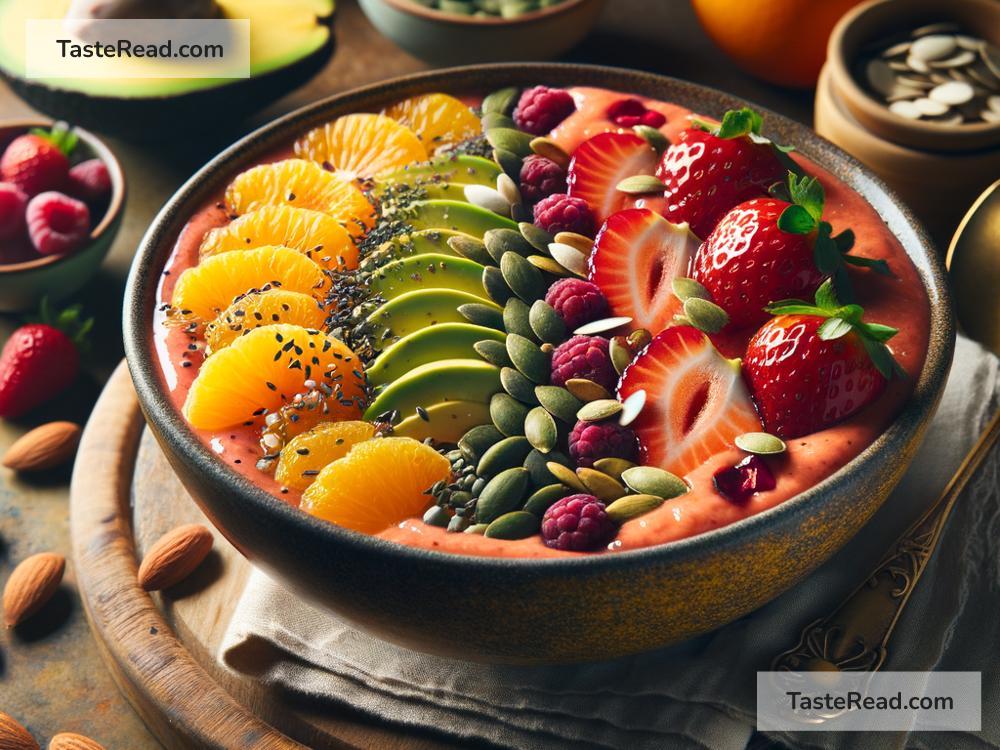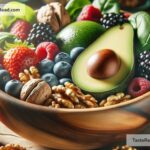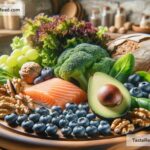Foods That Reduce the Risk of Stretch Marks
Stretch marks are a common skin issue that many people experience during rapid body changes like pregnancy, puberty, or weight fluctuations. These marks, which appear as streaks on the skin, occur when the skin stretches faster than it can manage, causing the collagen and elastin fibers to tear. While there is no magic cure for stretch marks, certain foods can help maintain skin elasticity, support collagen production, and provide essential nutrients to reduce the risk of stretch marks.
In this article, we’ll explore some healthy and delicious foods that can nourish your skin from the inside out and help minimize the risk of stretch marks.
1. Foods Rich in Vitamin C
Vitamin C is a powerful antioxidant that plays a vital role in collagen production—the protein responsible for keeping your skin firm and elastic. Collagen strengthens the skin, making it less prone to tearing during periods of rapid stretching.
Include these vitamin C-rich foods in your diet to support healthy skin:
– Citrus fruits like oranges, lemons, and grapefruits.
– Berries such as strawberries, blueberries, and blackberries.
– Kiwi for an extra vitamin C boost.
– Bell peppers (especially red ones) are surprisingly high in vitamin C.
– Tomatoes are another easy addition to salads and meals.
By consuming these foods regularly, you can give your skin the nutrients it needs to stay strong and supple.
2. Load Up on Vitamin E
Vitamin E helps keep your skin hydrated and protects it from damage caused by external factors like pollution and UV rays. Its moisturizing properties can improve elasticity and reduce the chances of developing stretch marks.
Here are some vitamin E-rich foods:
– Nuts like almonds, walnuts, and hazelnuts.
– Seeds, such as sunflower seeds and pumpkin seeds.
– Avocados, which are also packed with healthy fats.
– Spinach and other leafy greens.
Adding Vitamin E-rich foods to your meals will give your skin the hydration and protection it needs to adapt to physical changes.
3. Healthy Fats for Skin Elasticity
Healthy fats are essential for maintaining skin elasticity and hydration. They support the skin’s barrier function and help retain moisture, making it less prone to dryness and tearing.
Some great sources of healthy fats include:
– Fatty fish, such as salmon, mackerel, and sardines.
– Olive oil and other plant-based oils.
– Avocados, which offer a double benefit of vitamin E and healthy fats.
– Coconut oil, which can also be used topically.
When you include these fats in your diet, you’re giving your skin the tools it needs to stretch smoothly without damage.
4. Zinc-Rich Foods
Zinc is an essential mineral that plays a key role in skin repair and regeneration. It promotes collagen synthesis and helps wounds heal, making it an important nutrient for reducing the risk of stretch marks.
Foods high in zinc include:
– Shellfish, such as oysters and shrimp.
– Legumes like chickpeas, lentils, and beans.
– Seeds, especially pumpkin and sesame seeds.
– Meat, particularly lean beef and chicken.
Zinc deficiency can make your skin more vulnerable to damage, so don’t forget to incorporate these foods into your weekly meals.
5. Protein to Support Skin Structure
Protein is essential for producing collagen and elastin, the compounds that keep your skin stretchy and strong. Eating enough protein can help your skin adjust to stretching during weight gain, muscle growth, or pregnancy.
Some excellent protein sources include:
– Eggs, which are packed with nutrients like biotin that enhance skin health.
– Lean meats, such as chicken, turkey, and pork.
– Fish, which also offers omega-3 fatty acids.
– Beans and lentils, which are plant-based protein sources.
– Tofu and Tempeh, if you prefer vegetarian options.
Make sure to include high-quality protein in your meals to support your skin structurally and prevent damage.
6. Foods with Hydration Power
Staying hydrated is one of the simplest ways to protect your skin from stretch marks. When your skin is well-hydrated, it can stretch more easily without tearing. While water is important for hydration, certain foods can also boost your body’s water levels because they are naturally hydrating.
Try adding these hydrating foods to your diet:
– Cucumber, which has high water content.
– Watermelon, a refreshing and hydrating fruit.
– Celery, another water-rich vegetable.
– Zucchini, great for cooking and hydration.
– Herbal teas, though technically not food, can also provide hydration.
Combined with drinking enough water daily, these foods ensure your skin stays soft and supple.
7. Other Helpful Nutrients
Certain other nutrients can enhance skin health and reduce the risk of stretch marks, including:
– Biotin, found in eggs, bananas, and sweet potatoes, for skin strength.
– Vitamin D, from fortified foods or sunlight exposure, for overall skin health.
– Omega-3 fatty acids, found in fatty fish and flaxseeds, for elasticity.
The Bottom Line
While stretch marks are natural and harmless, taking care of your skin through a balanced, nutrient-rich diet can reduce their likelihood and keep your skin healthy, hydrated, and elastic. Foods rich in vitamins C, E, and zinc, as well as healthy fats and proteins, provide the nutrients your skin needs to handle physical changes smoothly.
Remember, pairing a healthy diet with regular exercise, adequate hydration, and skincare practices can further support your skin’s resilience. Start filling your plate with these skin-loving foods today—your skin will thank you!


